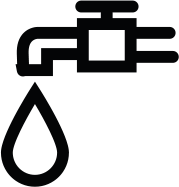

Understanding the concept of carbon offsetting can be a bit tricky. terms like emissions inventory, tokenized credits It is blockchain scare at first, but are important to understand the size of your carbon footprint on the planet, how it relates to global warming and how EKOSFERA helps you become one transformation agent. Come with us!
There are also no more doubts about the cause of this imbalance, that is, it is common ground that the human activities are at the root of the crisis. Since the beginning of the Industrial era (1750), the planet warmed up to about 1.1°C due to the concentration of greenhouse gases (GHG) in the atmosphere, released by fossil fuel burning.
As Paris Agreement, the countries decided to promote efforts to limit this temperature increase to 1.5°C, which will require profound changes in many aspects of human life. Given this, and because of our delay in acting to prevent the most worrying scenarios, the expression “climate change” no longer captures the dimension and urgency of the problem. We enter the phase of climate emergency.
GLOBAL CARBON CYCLE - ANNUAL VALUES
GLOBAL BALANCE OF CARBON DIOXIDE – 2006-2015
(In billions of tons of carbon dioxide per year)


The good news is that EKOSFERA can help you! We need to curb the emission of GHGs such as CO2 and urgently accelerate the sequestration of these gases from the atmosphere. But how? The good news is that EKOSFERA can help you! We believe that each person has a role to play in the transition to a greener, fairer and safer world. Including you!
First let's talk about your carbon footprint. Essa expressão diz respeito às emissões de GEE que você provoca com as atividades que realiza no dia-a-dia. Veja abaixo alguns exemplos de como cada um de nós impacta o ciclo de carbono. Atualmente, cada pessoa no Brasil emite, em média, cerca de 7,9 toneladas de gás carbônico por ano, o que equivale a cerca de 22 kg CO2 per day.






With the EKOSFERA, you have the opportunity to calculate your carbon footprint and still neutralize part of your GHG emissions. Knowing our impact leads us to rethink habits and lifestyles in favor of a real change.



EKOSFERA buys credits that are generated from REDD+ Projects (Reduction of Emissions from Deforestation and Forest Degradation), through the preservation of Brazilian forests and the reforestation of degraded areas, as well as investments in environmental technologies, contributing to the socioeconomic development of traditional communities.

But it is not enough to plant trees to acquire this benefit. Carbon credits need to be verified and issued by a legitimate certifying institution.

At EKOSFERA, we use Verra, the organization that manages the main and most reliable quality standard in the voluntary carbon market, the Verified Carbon Standard (VCS).

Verra certifies that a certain REDD+ project developed, for example, in the Brazilian Amazon, sequestered or avoided the emission of 1 ton of CO2e thus issues the carbon credit.
These individual certificates are tokenized. A token is the digital representation of an asset, which, in this case, is the certification that a certain amount of carbon has been neutralized.
This token receives a unique identification code, a sequence of letters and numbers, which is registered via blockchain technology. This means that it is possible to trace the origin of the neutralization of your emissions, that is, you can know which sustainable project offset the carbon you released into the atmosphere.
To learn more about blockchain traceability at EKOSFERA, Click here.
Finally, it is important to understand that the credits acquired by EKOSFERA are retired credits, that is, they serve exclusively to neutralize its carbon emissions. They can no longer be traded because they have already fulfilled their neutralizing role.
Atualmente, cada pessoa no Brasil emite, em média, cerca de 7,9 toneladas de gás carbônico por ano, o que equivale a cerca de 22 kg CO2 per day!
*Tendo em vista que a publicação dos dados anuais ocorre no ano subsequente (emissões de 2021 foram publicadas em novembro de 2022, por exemplo), utilizamos a cada ano as emissões mais recentes disponíveis (para o ano de 2023 utilizamos os dados de 2025 publicados em novembro de 2024).
| 2019 | 2020 | 2021 | 2022 | 2023 | |
| Total Emissions Brazil*: (+) | 2,147,507,008 tCO2 | 2,160,663,755 tCO2 | 2,422,625,065 tCO2 | 2,318,750,633 tCO2 | 2.295.614.181 tCO2 |
| Total removals*: (-) | 604,718,128 tCO2 | 635,000,000 tCO2 | 666,915,168 tCO2 | 629,697,259 tCO2 | 642.246.666 tCO2 |
| Net Emissions: (=) | 1,542,788,880 tCO2 | 1,525,663,755 tCO2 | 1,755,709,897 tCO2 | 1,688,783,374 tCO2 | 1.653.367.515 tCO2 |
| Population Brazil**: (/) | 210.147.125 | 211.755.692 | 214.016.154 | 203.080.756 | 207.618.141 |
| Average Emission per Inhabitant: (=) | 7.3 tCO2/hab/year | 7.0 tCO2/hab/year | 8.2 tCO2/hab/year | 8.3 tCO2/hab/year | 7,9 tCO2/hab/year |
| Days in the Year: (/) | 365 | 365 | 365 | 365 | 365 |
| Average Emission per Inhab. per Day: (=) | 25kg CO2 | 20kg CO2 | 23kg CO2 | 23kg CO2 | 22kg CO2 |
*Source of GHG emissions: Greenhouse Gas Emissions Estimation System of the Climate Observatory (SEEG)
A SEEG atualiza anualmente os valores dos anos anteriores. A tabela acima mantém os valores originais publicados ao final de cada ano.
**Brazil Population Source: Brazilian Institute of Geography and Statistics (IBGE)
A população estimada do Brasil para 2023 é baseada na média de crescimento observado pelo IBGE entre 2022 e 2024.

To arrive at the value of
individual emissions per day,
we take into account the
total CO emissions2 of
Brazil in the year.*
Finally, we share this
subtraction (net emissions)
by the Brazilian population in
respective years
(data from IBGE).
Currently, every person
in Brazil emits, on average,
cerca de 7,9 toneladas
of carbon dioxide per year,
which is equivalent to approximately
22 kg CO2 per day!